As mentioned in the previous entry in this series, we’re ranking the top-20 players at each position in the NHL.
Ranking the best players in the NHL is an arduous task, not something I believe anyone can do alone, and certainly not without the aide of statistical analysis. I decided to split statistics into three categories for skaters: offensive play, defensive play, and transition play. The weights given to each category out of a possible total of 100 points vary by position, and I asked for help in deciding upon those weights from Sportsnet contributors Jonathan Willis and Steve Burtch, along with The Hockey News writer Dom Luszczyszyn. With their insight, I arrived at weights for the left wing position of 25 for offence, 35 for defence, and 40 for transition play.
Within each category, statistics were also weighted based on importance to theircontribution, for example primary assists are weighted more heavily for centres than wingers. Points are then awarded on a basis of how where each player lies between the best and worst player at their position.
Statistics were collected from Sportlogiq, Corsica.hockey, and stats.hockeyanalysis.com for this project. Where available, a three-year sample is used, and the minimum amount of ice time needed to be included was 2,000 minutes at 5-vs-5.
For the defence position, the statistics used for each category were:
Offence: 5-vs-5 and powerplay goals/60, primary assists/60, secondary assists/60, shot attempts/60, scoring chances/60, scoring chance generating plays/60, relative team goals for/60.
Defence: 5-vs-5 and shorthanded loose puck recoveries, defensive plays (hits, stickchecks, pass blocks, and shot blocks), relative team shot attempts against/60, relative team goals against/60, quality of teammates, and quality of competition.
Transition: 5-vs-5 shot attempt differential, relative shot attempt differential, possession driving plays/60, controlled entry rate, controlled exit rate, completed passes/60, and pass success rate. Before we get into it, I want to stress that the weightings of the statistics inside each category are my own, and as such, this list is by no means definitive.
20: Dustin Byfuglien | Offence: 17.25/25 | Defence: 17.60/35 | Transition: 22.57/40 | Total: 57.42/100
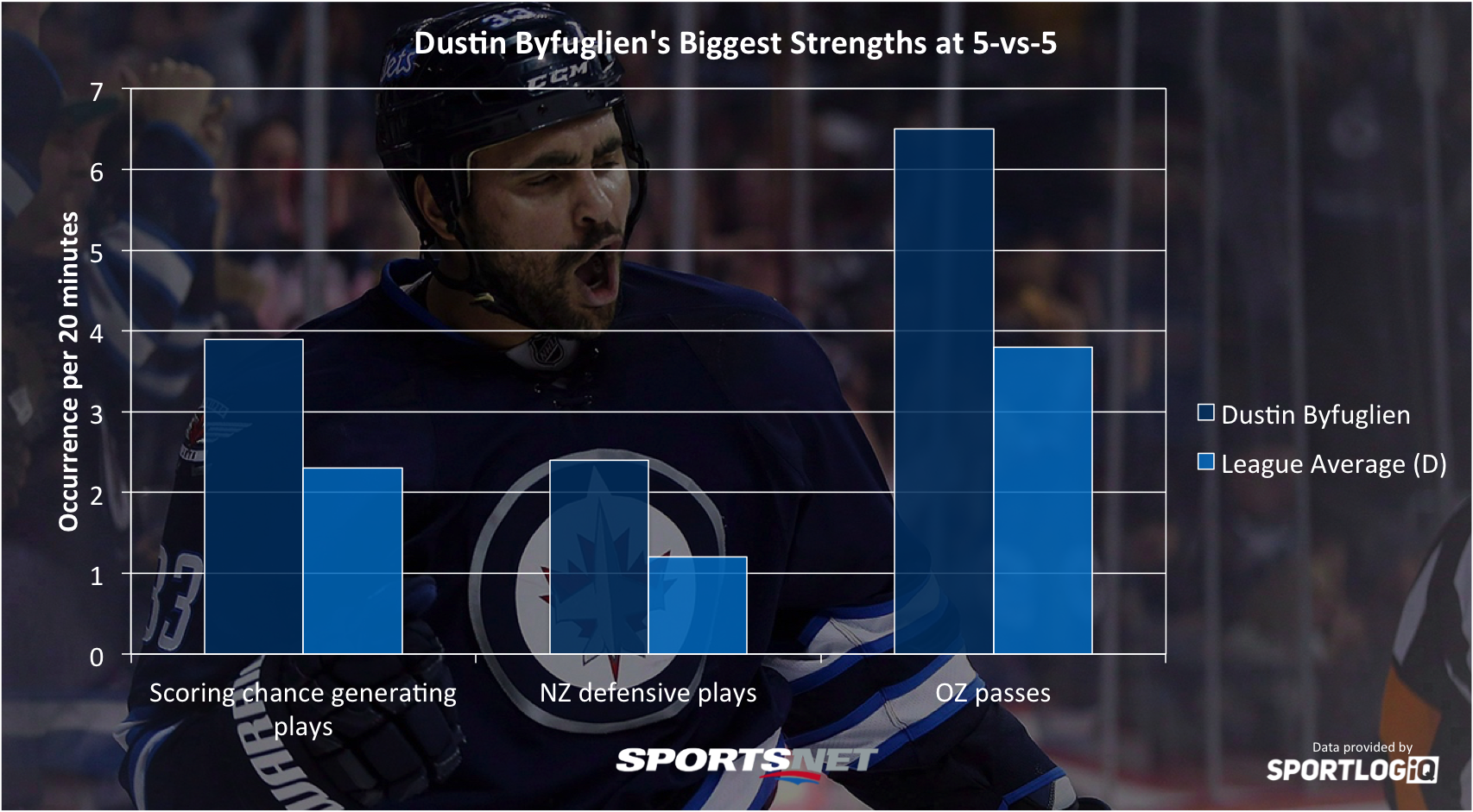
Don’t tell John Tortorella, but Dustin Byfuglien is the third-best American defenceman in the NHL, probably not a guy you healthy scratch. Byfuglien is a physical powerhouse, but he’s also one of the top scoring-chance generators from the back end in the NHL, and a very good playmaker in the offensive zone. When it comes to defending and transition, Byfuglien is just a hair below average for a top-pairing defenceman, but considering his elite offence, he more than earns his spot.
19: Kris Letang | Offence: 14.00/25 | Defence: 18.78/35 | Transition: 24.85/40 | Total: 57.63/100

Known primarily as an offensive defenceman, Letang is actually above average for a first pairing blue liner by nearly identical amounts in all three categories. Letang is the Penguins’ all-around play driver, contributing in every facet of the game to buffer a relatively weak (on paper) defensive squad. Letang often gets criticized for his defensive play, but the results speak for themselves.
18: John Klingberg | Offence: 17.55/25 | Defence: 15.28/35 | Transition: 24.79/40 | Total: 57.63/100
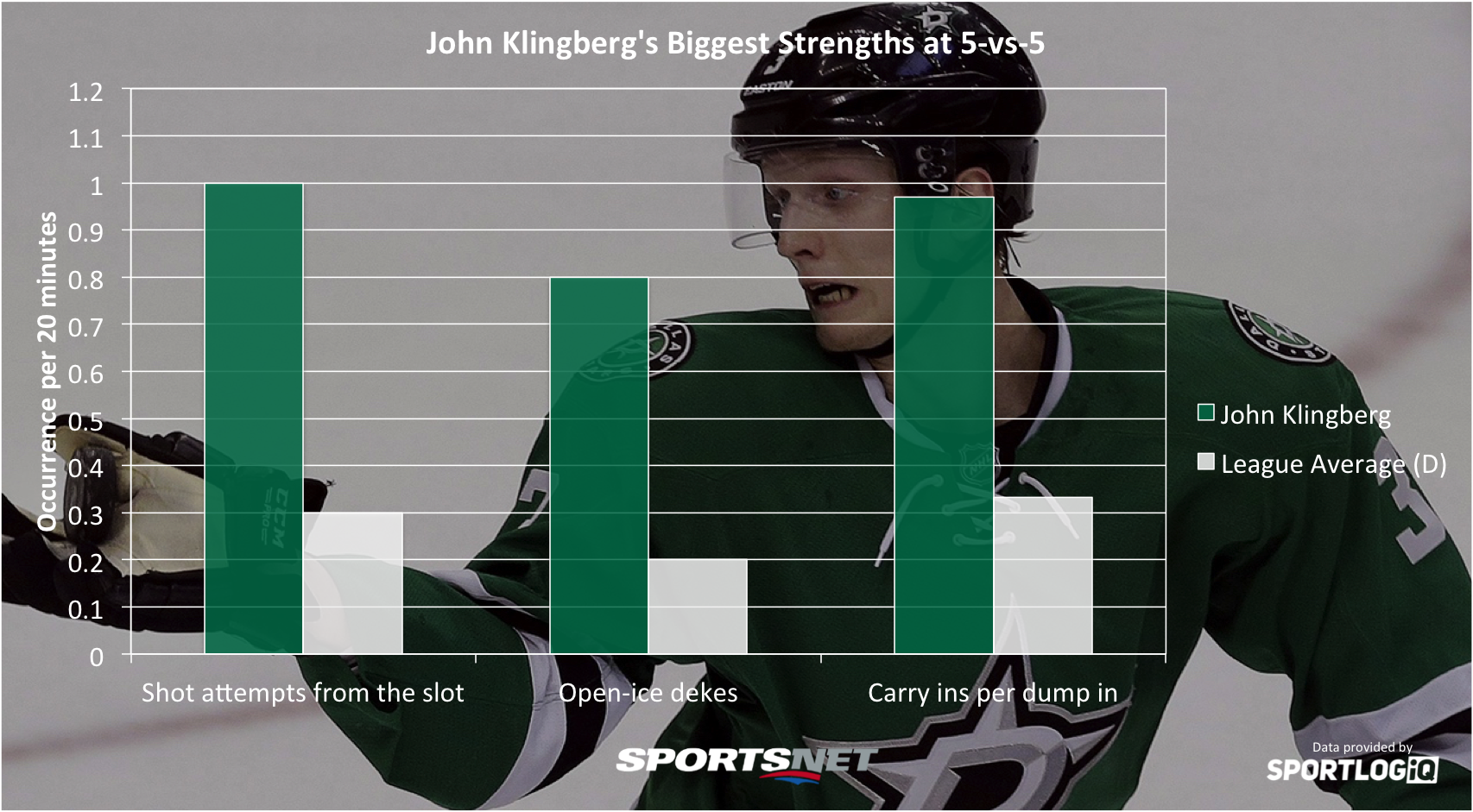
As a young defender, it makes sense for Klingberg to be a little below average defensively, and part of the reason for that is he’s a big risk taker, preferring to hold onto the puck and beat players one-on-one. While that hurts him a little defensively, it makes him one of the NHL’s premier offensive defencemen, and makes him an above average transition player too. Scoring goals at a high rate is something to expect going forward because of how often he pinches into the slot.
17: Tyson Barrie | Offence: 17.04/25 | Defence: 15.80/35 | Transition: 24.83/40 | Total: 57.67/100
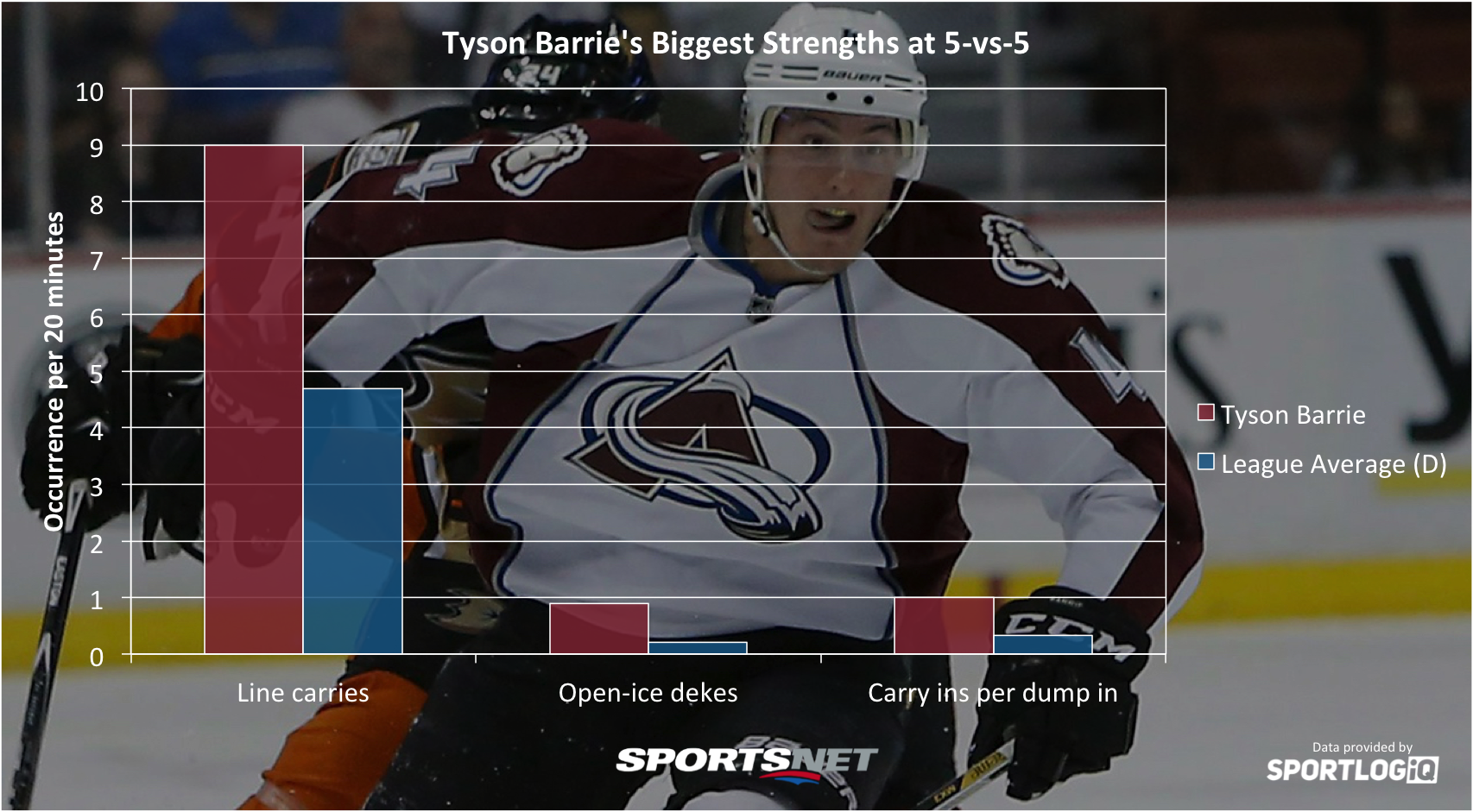
Like Klingberg, Barrie is a risk taker who produces a lot of offence for his team, though he is a tiny bit more polished. Barrie’s biggest strengths as a player are all inter-related. He’s a puck carrier through and through. Defencemen typically don’t carry the puck in transition as much as forwards, they prefer to make passes, but the added versatility of a defenceman who can carry the puck successfully adds a lot of offensive opportunity.
16: Jake Muzzin | Offence: 12.07/25 | Defence: 19.21/35 | Transition: 26.48/40 | Total: 57.75/100

Whenever there’s an analytics versus the eye test debate about defencemen, Jake Muzzin’s name will come up. Muzzin is an analytics darling, and the fact is, you can’t take away his results. He’s a second pairing guy offensively, but he’s way above first pairing average for defensive and transition play. His biggest standout skill is firing shots on net, but he’s one of those players who ends up being very good because he’s above average at almost everything. Muzzin may not look special, but that doesn’t mean he isn’t.
15: Sami Vatanen | Offence: 13.67/25 | Defence: 19.10/35 | Transition: 25.28/40 | Total: 58.05/100

Often overlooked in Anaheim behind Hampus Lindholm, Sami Vatanen is a great defenceman in his own right, combining strong defensive play, solid puck moving ability, and the willingness to take risks to become a well-rounded player who could fit in on just about any team’s top pair.
14: Anton Stralman | Offence: 10.29/25 | Defence: 18.31/35 | Transition: 29.82/40 | Total: 58.42/100

Nowadays it’s pretty surprising Anton Stralman never got his due as a great player until his late-20s, but it took a while for his brilliance to be recognized. Stralman is a possession machine and he drives most of that in the offensive zone — he is one of the best players in the league at stopping opposition breakouts. Only three defencemen in the NHL are more successful in transition, with Stralman’s biggest strength there being the second-best pass success rate in the league.
13: Duncan Keith | Offence: 14.27/25 | Defence: 18.06/35 | Transition: 26.38/40 | Total: 58.72/100
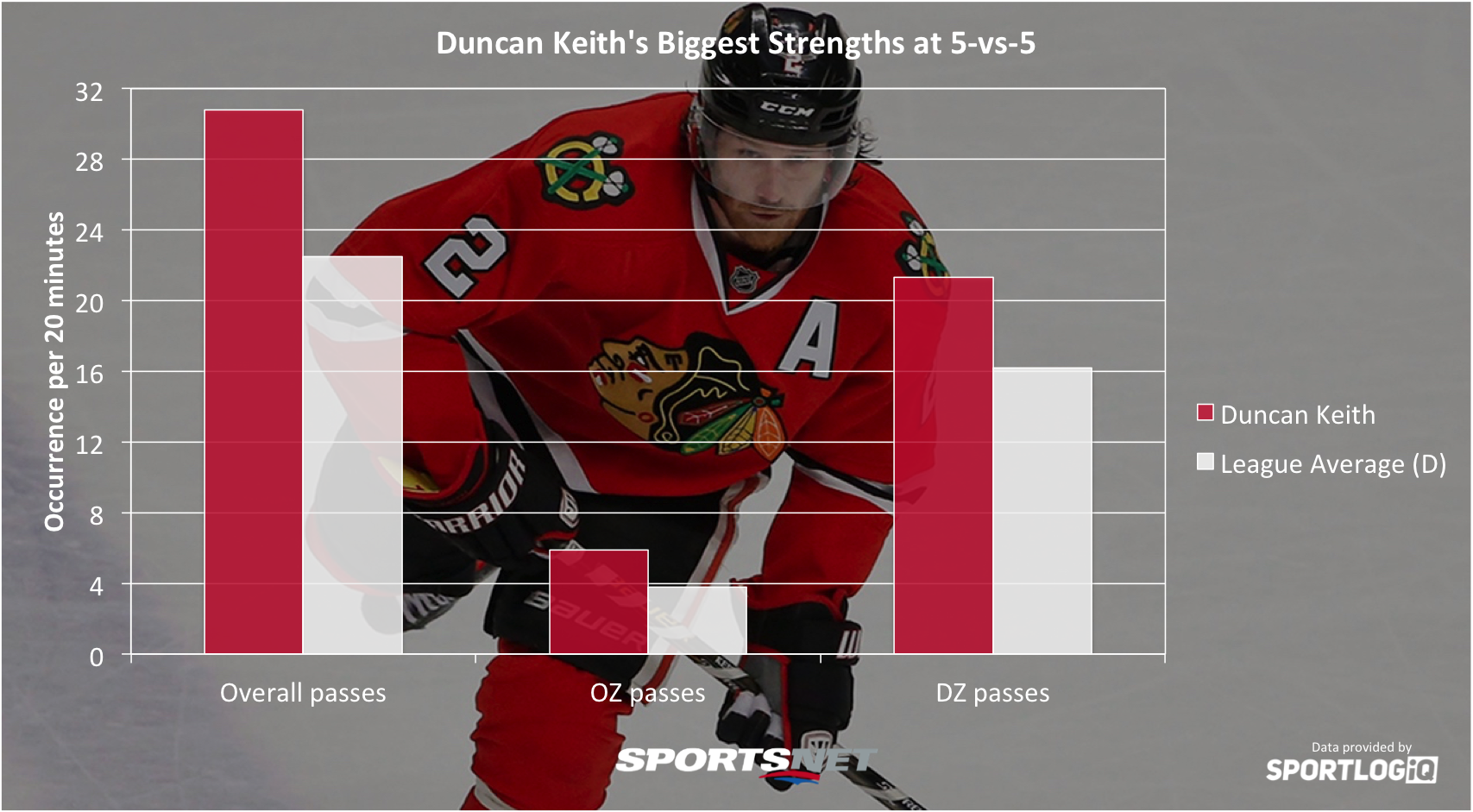
Some may be surprised to see Duncan Keith outside the top-10, but remember he’s 33 years old, not 25. That Keith remains so strong is a testament to his longevity. One of the ways Keith has been able to stand the test of time is his passing ability. He would much rather make plays than skate with the puck, despite being among the NHL’s best skaters throughout his career. That decision likely saves him a bit of energy and cuts down on possible physical play against him as well.
12: T.J. Brodie | Offence: 9.57/25 | Defence: 21.11/35 | Transition: 28.14/40 | Total: 58.82/100
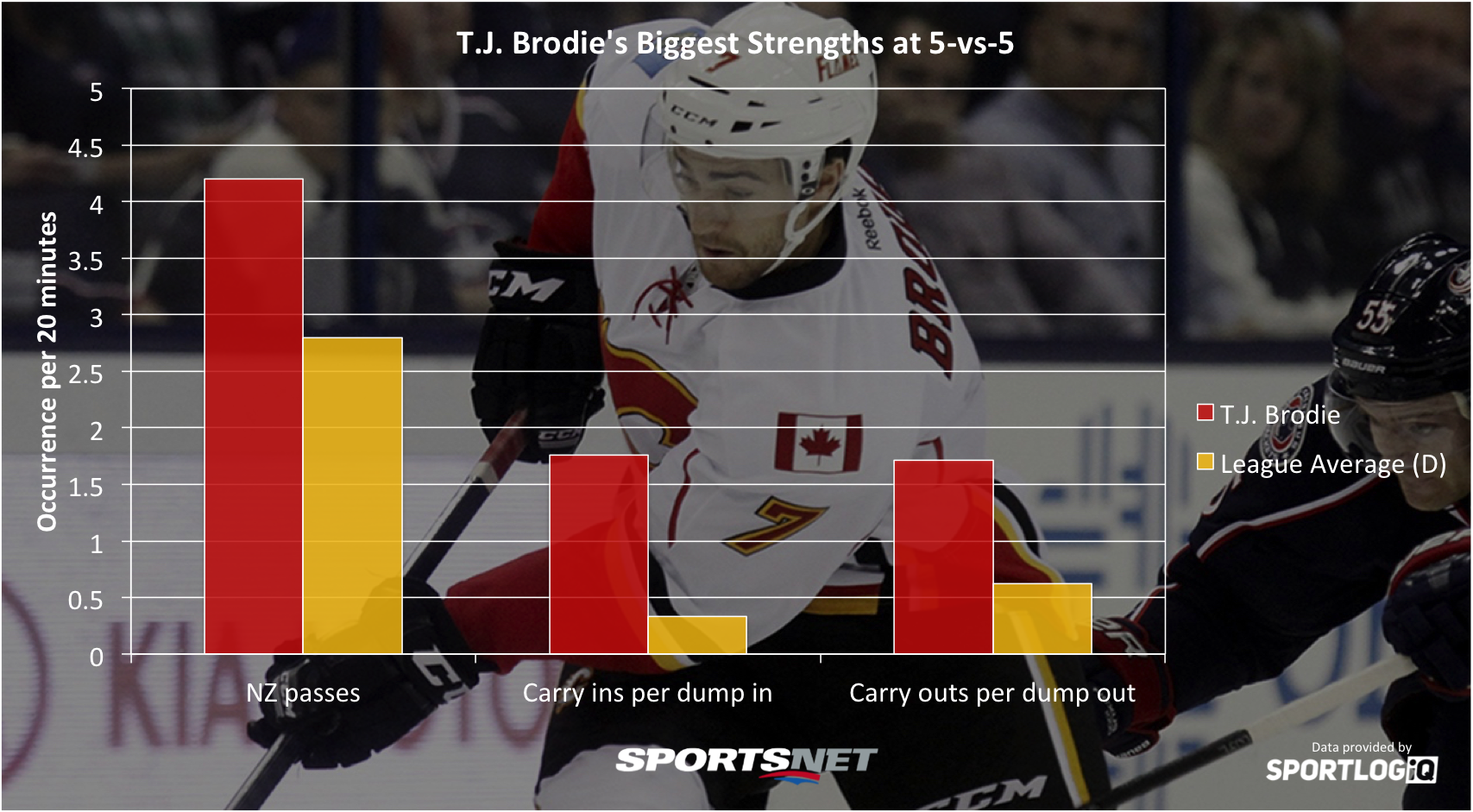
One half of Calgary’s incredible first pairing, T.J. Brodie came out of junior as an offensive defenceman, but now takes a secondary or even tertiary role in that regard in Calgary. He has diversified his game to be a defensive stalwart and transition beast. Brodie is all about efficiency, rarely dumping the puck out of his zone or into the opponents, and he’s excellent at finding players in the neutral zone to create rushes.
11: Oliver Ekman-Larsson | Offence: 13.17/25 | Defence: 23.31/35 | Transition: 22.53/40 | Total: 59.01/100
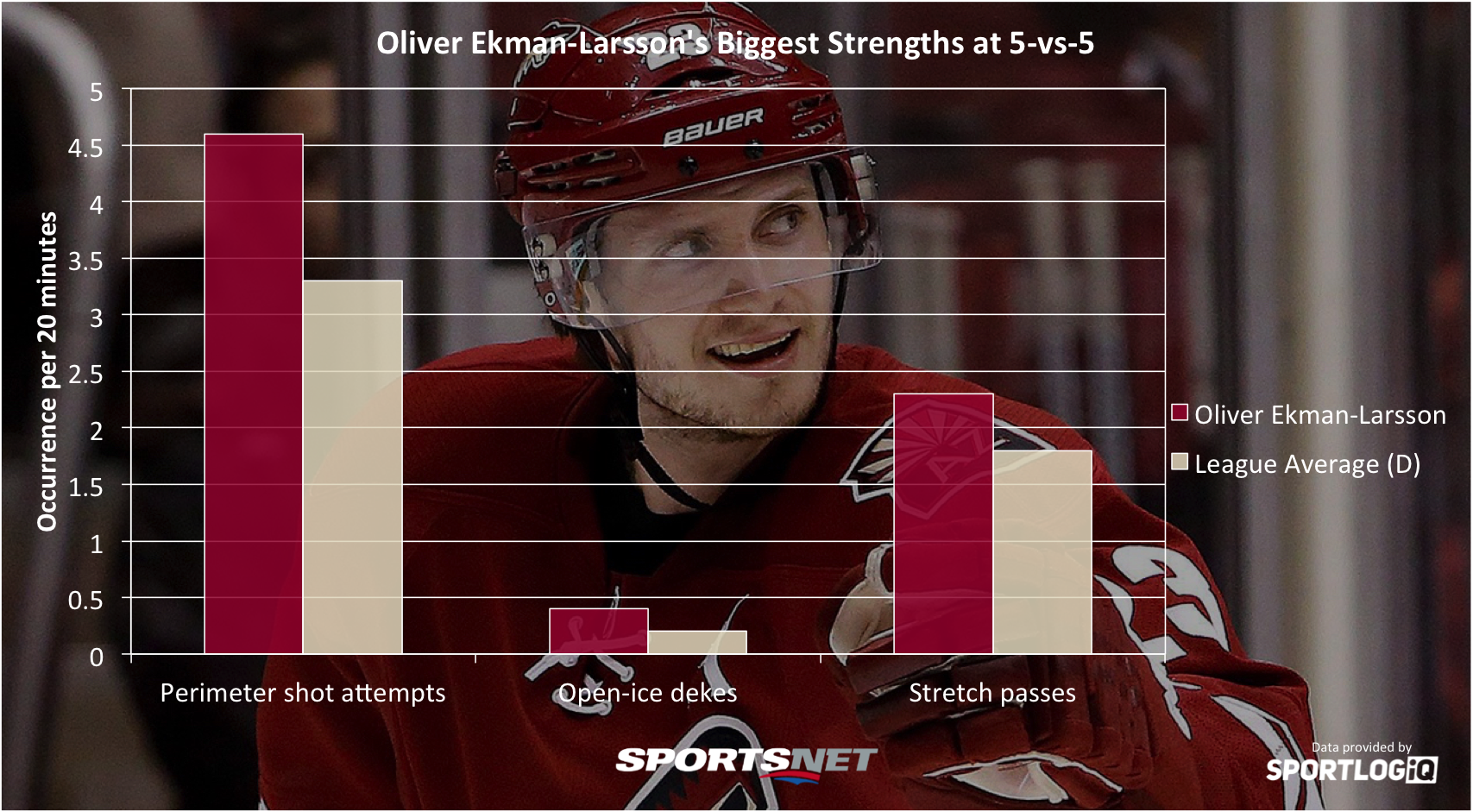
Most people who talk about Ekman-Larsson refer to his goal scoring and while he’s above average offensively for a first pairing defenceman, it’s his play without the puck that stands out most overall, with the fifth-best defensive score in the league. Despite being heavily involved in Arizona’s breakout though, Ekman-Larsson is a hair below first pairing average as a transition player.
10: Hampus Lindholm | Offence: 13.04/25 | Defence: 20.00/35 | Transition: 26.80/40 | Total: 59.85/100
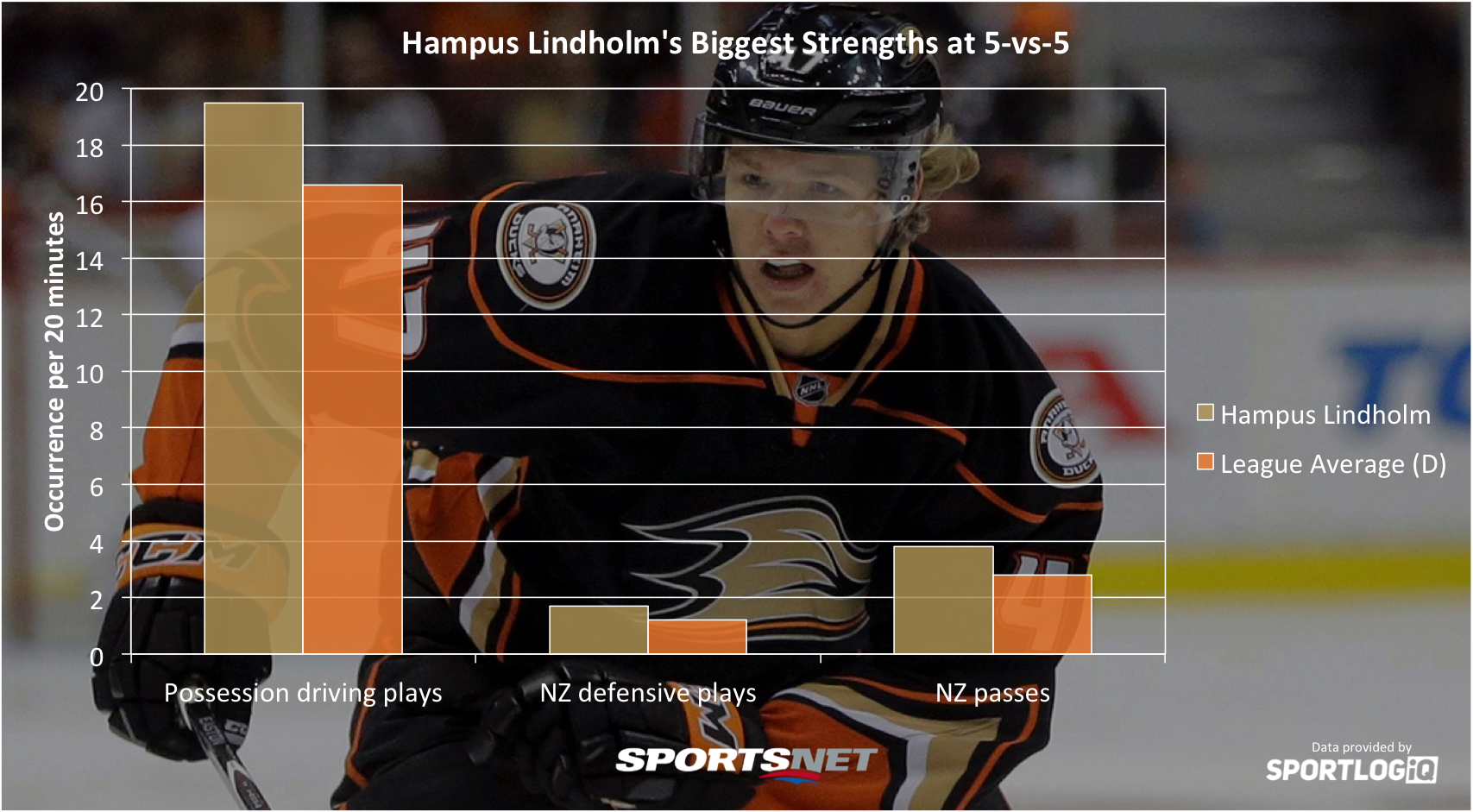
Hampus Lindholm is the new darling of the analytics community, and for good reason. He’s above average in all areas, but specifically his ability to move the puck up the ice is extremely strong, and he flat out owns the neutral zone. Whether he already has the puck, or he’s trying to get it from opponents, you can bet Lindholm is going to beat you in the middle of the ice.
9: Matt Niskanen | Offence: 12.41/25 | Defence: 22.32/35 | Transition: 25.40/40 | Total: 60.12/100

Often overlooked when people name elite defencemen, Matt Niskanen has snuck up in recent years to become one of the biggest impact players in the game. He’s only average as a first pairing defenceman on the offensive side, but he’s flat out dominant defensively and in transition, consistently making smart choices with and without the puck, with pinpoint accurate passing. It should not have been a surprise that he was easily Team USA’s best defenceman at the World Cup of Hockey.
8: Brian Campbell | Offence: 9.25/25 | Defence: 23.54/35 | Transition: 27.61/40 | Total: 60.41/100
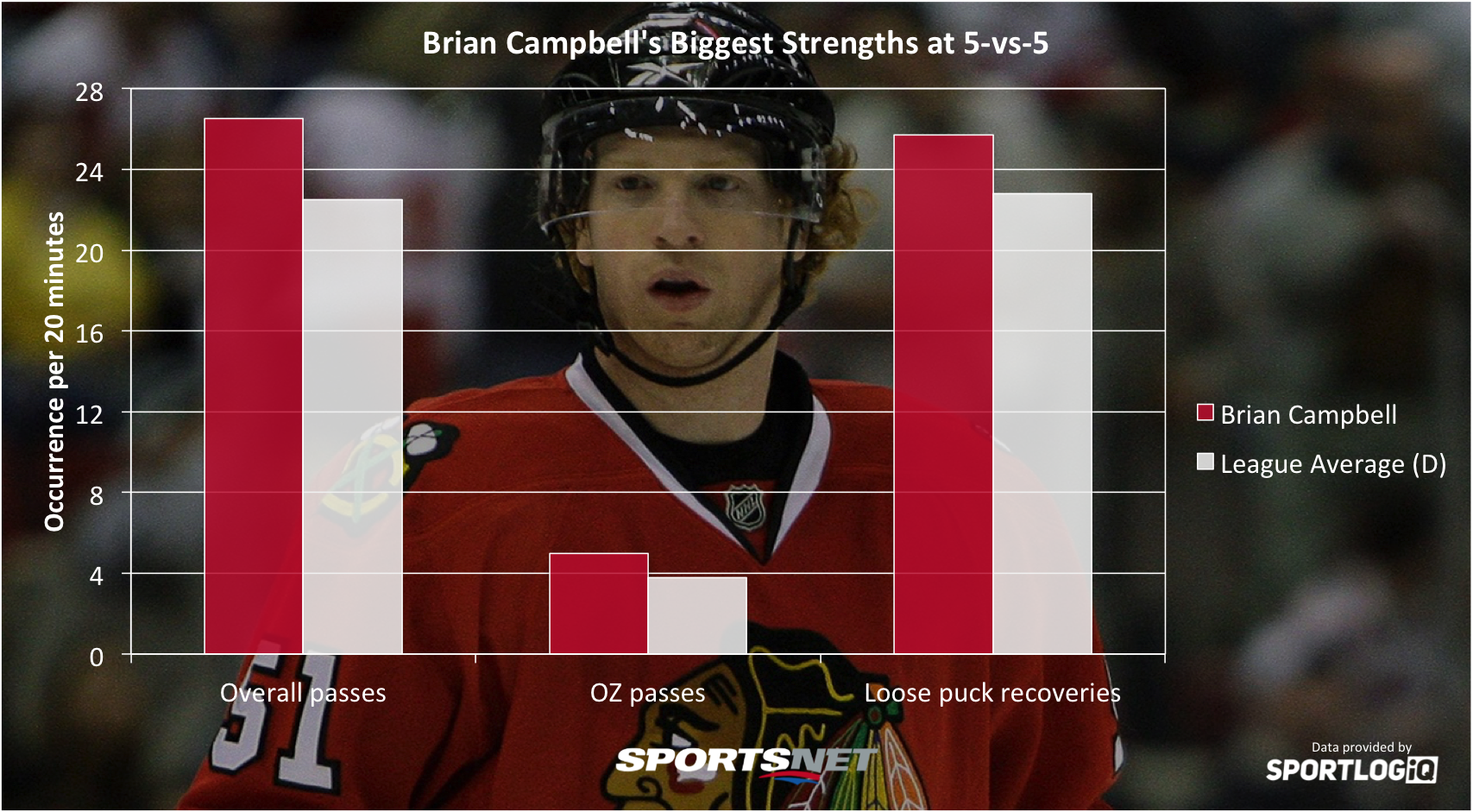
Another player who gets overlooked a lot, Brian Campbell has defied the age curve at 37 years old to remain an elite defenceman, possibly even improving in his mid-30s. Many will suggest Campbell got a boost from playing with Aaron Ekblad, but essentially every data point says the opposite is true, though Ekblad no doubt is very good. Campbell conserves his energy with passing much like Duncan Keith, but also uses his speed to beat players to loose pucks more than most. The offensive numbers may be declining, but defensively Campbell has been brilliant.
7: Brent Burns | Offence: 19.86/25 | Defence: 19.78/35 | Transition: 21.12/40 | Total: 60.76/100

How many players have gone from being a defenceman, to a winger, to a defenceman again, then nearly score 30 from the back end? It might be impossible to replicate his career year last season, after all Burns put the puck on net 108 more times than his previous career high, but no one has had as big an impact on their team’s offence from defence as Burns the past three seasons. Burns is below average in transition mainly because he is very haphazard with the puck, boasting the lowest pass success rate in the NHL among regular defencemen, but he makes up for it by being surprisingly strong away from the puck, using his speed and physicality to win the puck back.
6: Kevin Shattenkirk | Offence: 16.71/25 | Defence: 19.61/35 | Transition: 25.40/40 | Total: 61.72/100
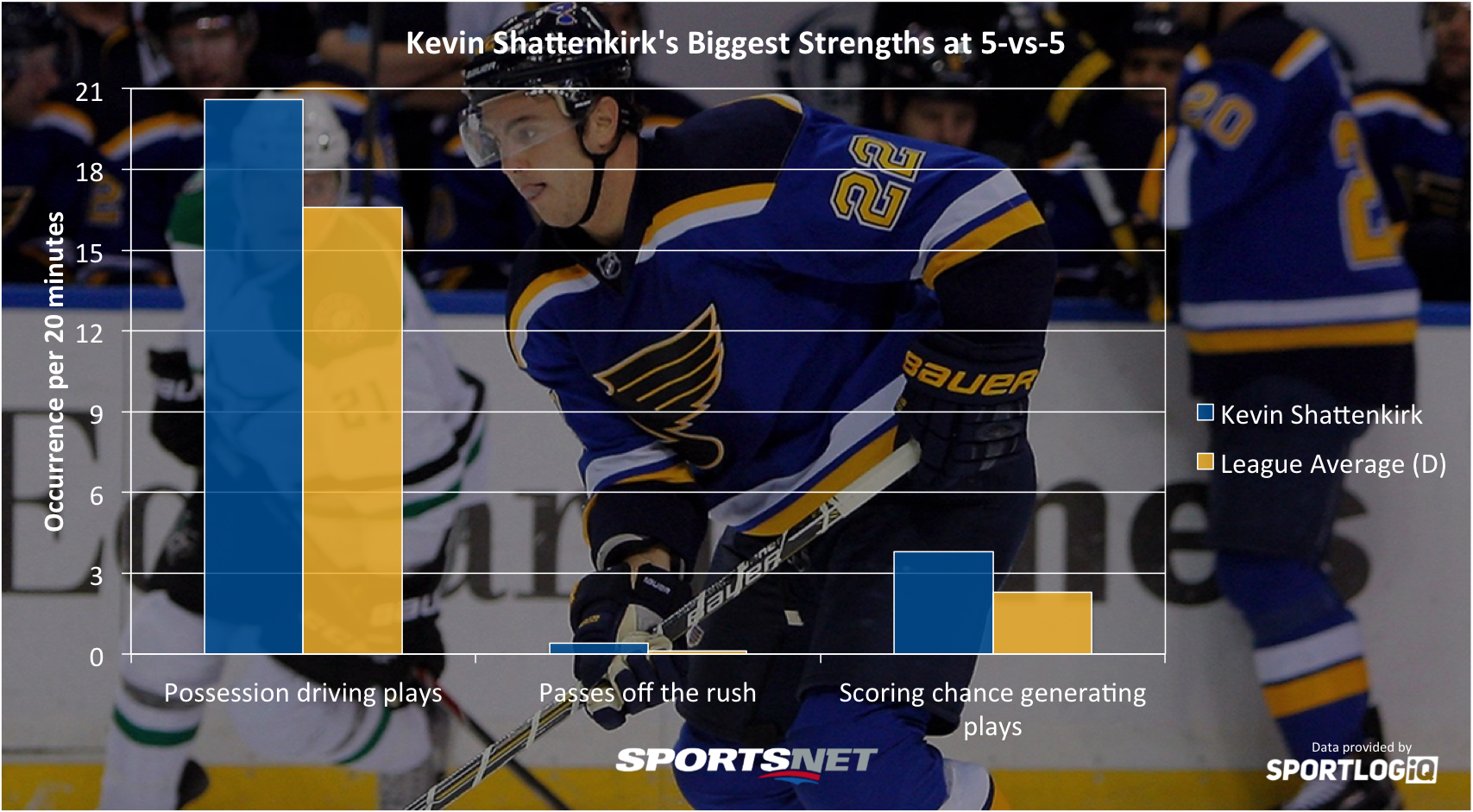
I haven’t yet seen a logical reason for Team USA not taking Kevin Shattenkirk with them to the World Cup of Hockey, because his game has very few weaknesses. Praised for his offence, Shattenkirk is above average in all areas of the game; driving possession like few can, and using his head to be a smart defender despite below average speed.
5: Drew Doughty | Offence: 12.24/25 | Defence: 17.38/35 | Transition: 32.12/40 | Total: 61.74/100

The reigning Norris Trophy winner is an odd specimen, ending up just below average in both offensive play and defensive play, but second in the entire NHL in transition. No defenceman, or player at any position, has a higher pass success rate than Drew Doughty, and he can carry the puck with equal efficiency. While his pass success rate may be the driving force behind his reputation as a mistake-free hockey player, Doughty isn’t afraid to take risks, and it does occasionally blow up on him.
4: Victor Hedman | Offence: 16.72/25 | Defence: 22.29/35 | Transition: 26.51/40 | Total: 65.53/100

Try to find something that Victor Hedman is bad at — it’s not easy. Possibly the most well-rounded defenceman in the game, Hedman can tear your team apart through choking defensive play, punish you with incredible scoring plays, or find his teammates with a stretch pass from the goal line to his opponent’s blue line in transition for a breakaway. He’s fast, he’s agile, and if you actually can beat him to a puck, he’s also massive. That’s one scary combination.
3: P.K. Subban | Offence: 17.77/25 | Defence: 23.19/35 | Transition: 26.34/40 | Total: 67.30/100
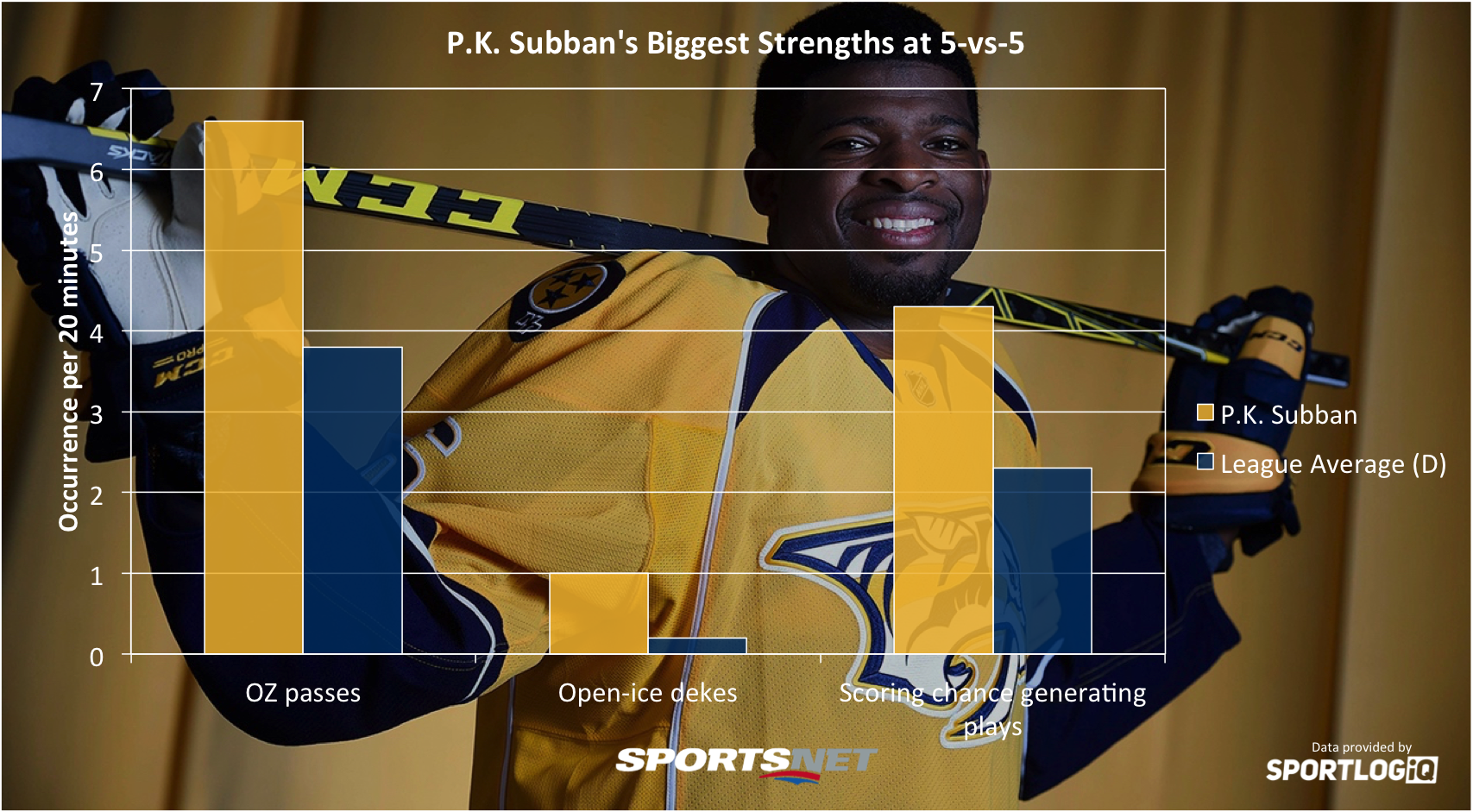
Only Brent Burns has a bigger impact on his team’s offence than Subban and that offensive ability combined with his penchant for flashy plays has earned Subban the reputation of a poor defensive player, yet only five defencemen over the past three seasons have had a bigger positive defensive impact on their team. He definitely likes to take risks with the puck, but the fact is he doesn’t make many mistakes, and the plays he does make consistently wins games.
2: Mark Giordano | Offence: 15.44/25 | Defence: 24.65/35 | Transition: 27.72/40 | Total: 67.81/100
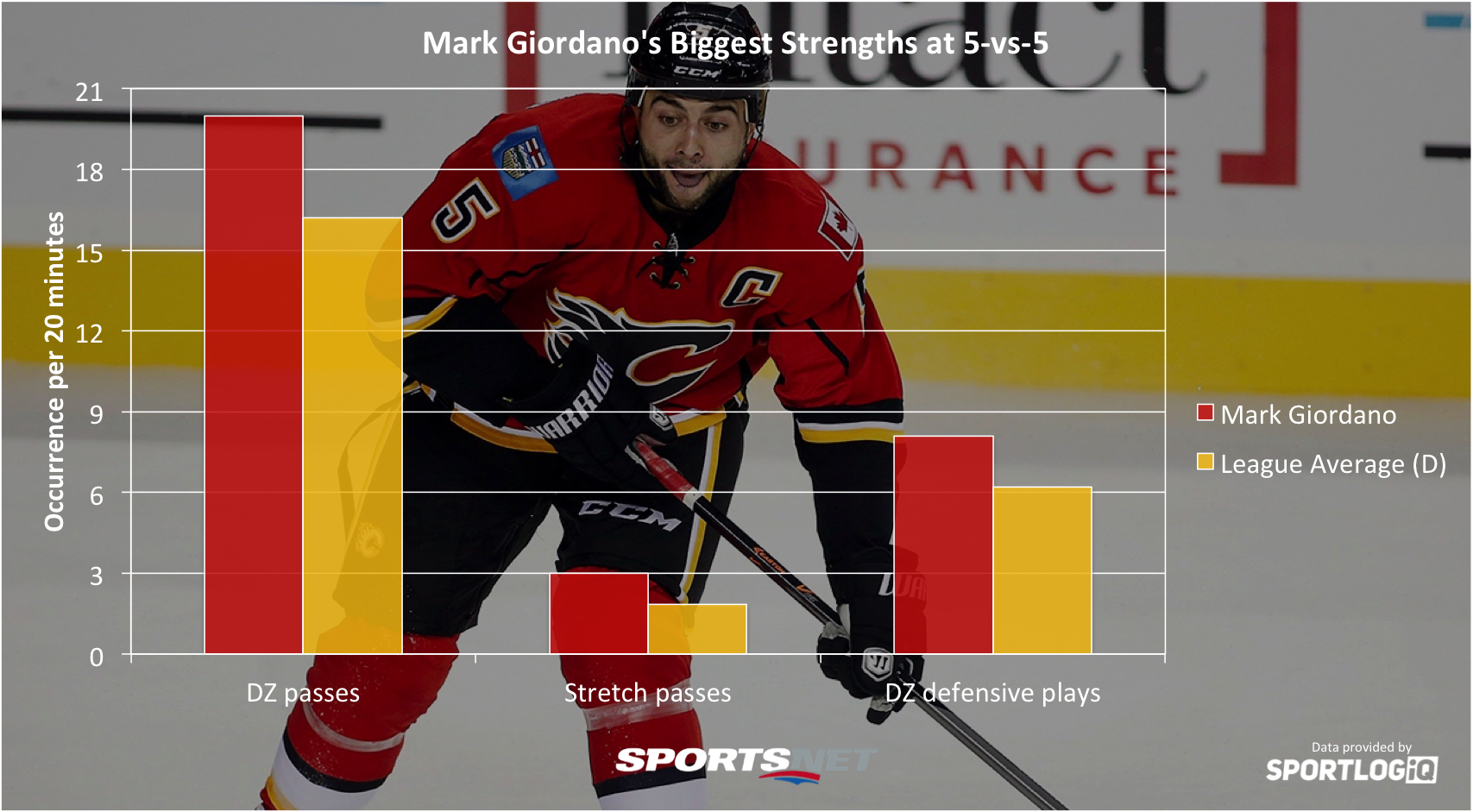
After two seasons where he could have easily won the Norris Trophy had he not been injured for the last quarter of the year, Giordano finally played a full season and set career highs in goals and points. His offensive numbers are great, but what truly sets him apart is his play without the puck, where he ranks as the best defensive defenceman in the NHL. Giordano is quick, physical, and smart, and when he does win the puck away from opponents, he’s also an elite transition player. He’s everything you want in a franchise defenceman, even if he is 32 years old already.
1: Erik Karlsson | Offence: 17.34/25 | Defence: 22.58/35 | Transition: 32.46/40 | Total: 72.38/100
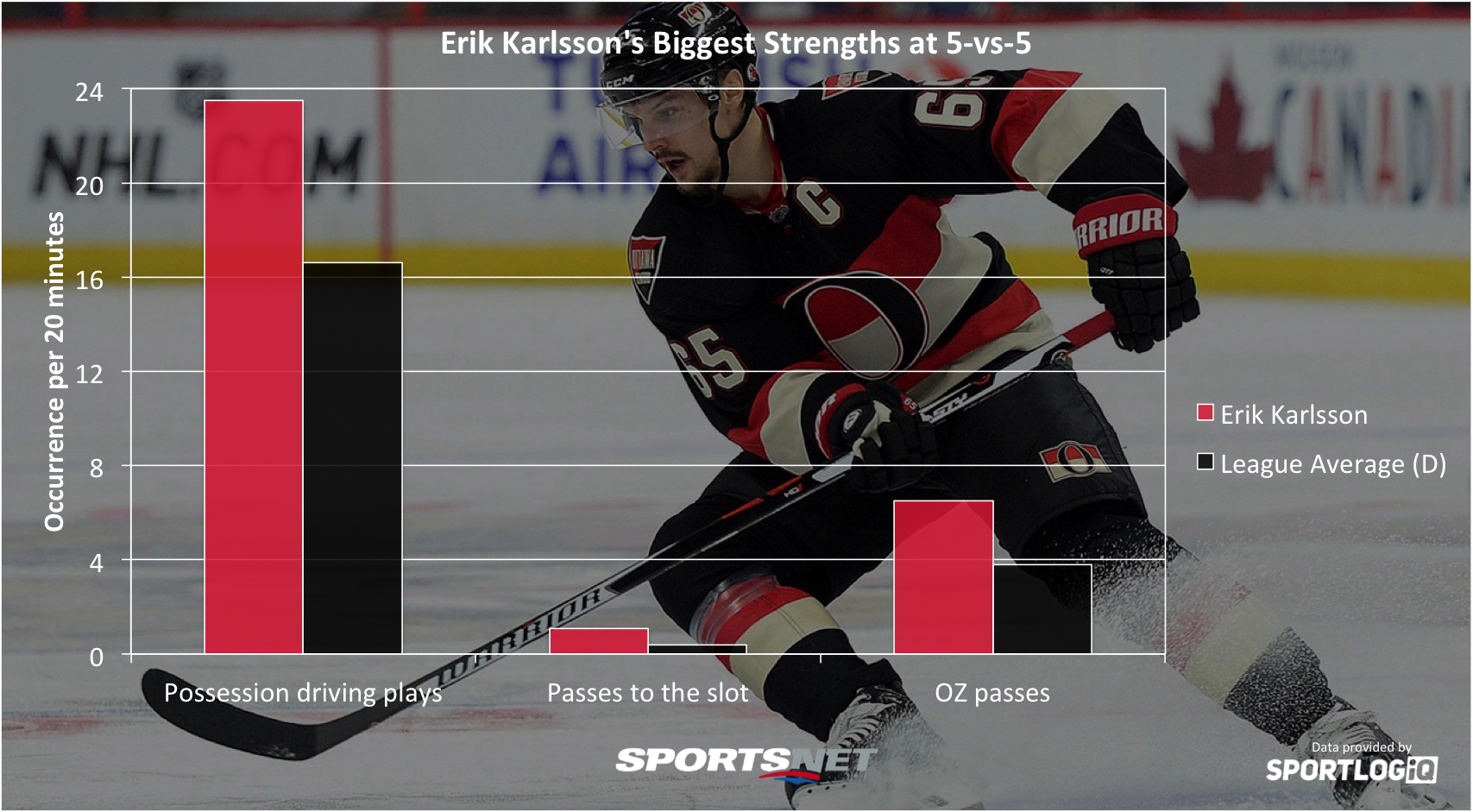
The best point producing defenceman in the NHL, Karlsson makes an even bigger impact in transition play than he does strictly in producing goals, where he is easily the top defenceman. And while traditionalists mock his defensive play, it seems to be working pretty well for him — he ranks seventh among defencemen in defensive impact the past three seasons. All together that combines to make Karlsson the top defenceman in the NHL today, and to be frank, it’s not particularly close. There is a 4.57 point gap between him and the next-best player.








